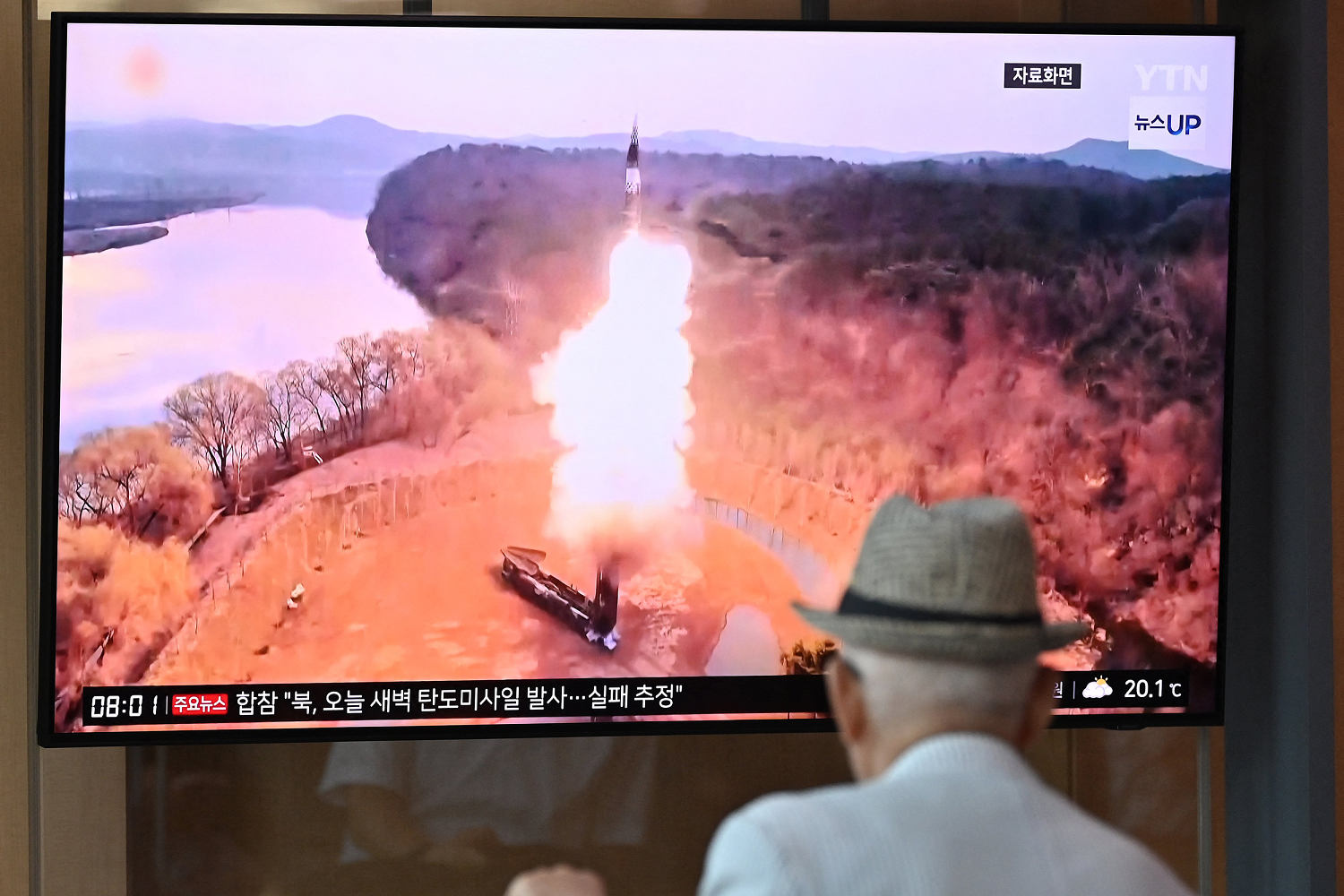
SEOUL, South Korea — A North Korean ballistic missile test Wednesday most likely ended in failure, South Korea’s military said, days after the North protested the recent regional deployment of a U.S. aircraft carrier for a trilateral military drill with South Korea and Japan.
South Korea’s Joint Chiefs of Staff said in a statement that North Korea launched a ballistic missile from its capital region around 5:30 a.m. on Wednesday (4:30 p.m. Tuesday ET). It said the missile was launched toward the North’s eastern waters, but the launch was suspected to have ended in failure.
The Joint Chiefs of Staff said South Korean and U.S. intelligence authorities are analyzing details of the North Korean launch. But it did not immediately explain why it believes the launch failed. Japan’s Defense Ministry said earlier Wednesday that it had also detected a suspected ballistic missile launch by North Korea.
South Korea’s Yonhap news agency reported that the North Korean missile flew about 155 miles.
Japanese media reported that the North Korean projectile fell outside Japan’s exclusive economic zone.
The North’s reported launch also came hours after South Korea said North Korea floated huge balloons probably carrying trash across the border for a second consecutive day.
North Korea has conducted a series of trash-carrying balloon launches toward South Korea since late May in what it calls a tit-for-tat response to South Korean activists flying political leaflets via their own balloons. On June 9, South Korea responded by briefly restarting propaganda broadcasts from its border loudspeakers for the first time in years. South Korea’s military said Monday that it was ready to turn on its loudspeakers again.
The USS Theodore Roosevelt arrived in South Korea on Saturday and South Korean President Yoon Suk Yeol boarded the carrier on Tuesday, the first sitting South Korean president to board a U.S. aircraft carrier since 1994.
Yoon told American and South Korean troops on the carrier that their countries’ alliance is the world’s greatest and can defeat any enemy. He said the U.S. carrier is to leave Wednesday for the South Korea-U.S.-Japan drill, dubbed “Freedom Edge.” The training is aimed at sharpening the countries’ combined response in various areas of operation, including air, sea and cyberspace.
North Korea’s vice defense minister, Kim Kang Il, on Monday called the U.S. aircraft carrier’s deployment “reckless” and “dangerous.” North Korea has previously called major U.S.-South Korean drills invasion rehearsals and reacted with missile tests.
Seoul officials said the upcoming South Korea-U.S.-Japan training is meant to strengthen the three countries’ response capabilities against North Korea’s evolving nuclear threats at a time when the North is advancing its military partnerships with Russia.
During a summit in Pyongyang last week, North Korean leader Kim Jong Un and Russian President Vladimir Putin signed a deal requiring each country to provide aid if attacked and vowed to strengthen other cooperation. Observers say the accord represents the strongest connection between the two countries since the end of the Cold War.
The United States and its partners believe North Korea has been providing Russia with much-needed conventional arms for its war in Ukraine in return for military and economic assistance.
North Korea’s reported missile launch is its first weapons demonstration since May 30, when Kim supervised the firing of nuclear-capable multiple rocket launchers to simulate a preemptive attack on South Korea. The drill came days after North Korea’s attempt to put its second spy satellite into orbit ended in failure, with its rocket carrying that satellite exploding in mid-air soon after liftoff.
Since 2022, North Korea has sharply increased the pace of weapons tests to increase its nuclear attack capabilities to cope with what it calls a deepening U.S. military threat. Foreign experts say North Korea eventually aims to use its larger nuclear arsenal to wrest greater concessions from the U.S. when diplomacy resumes.







